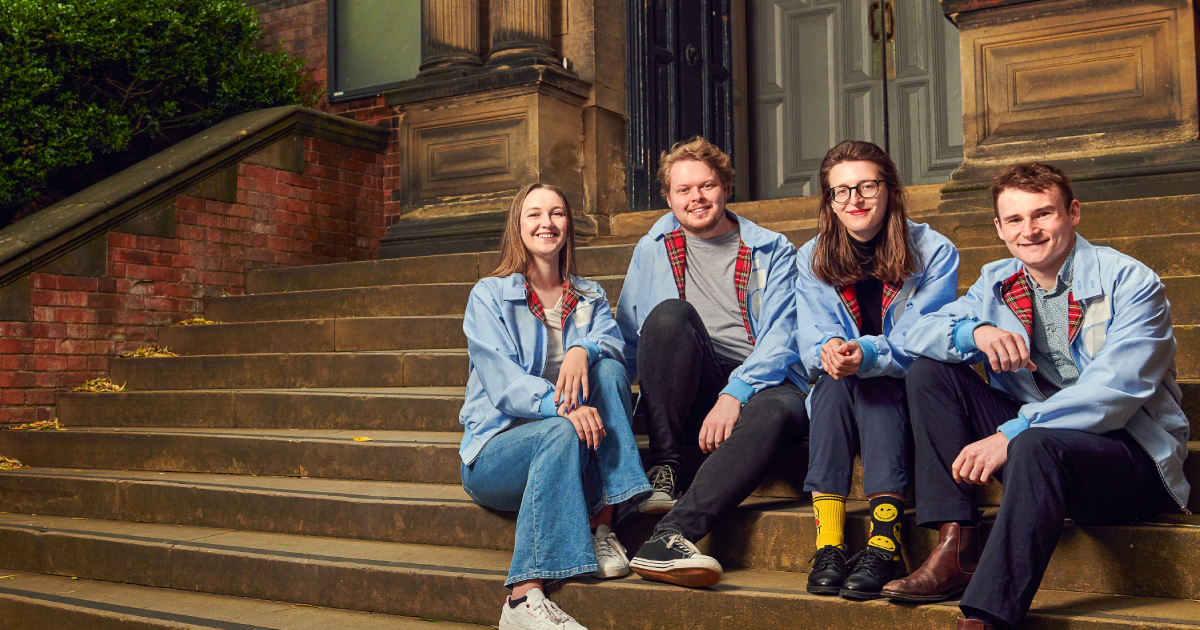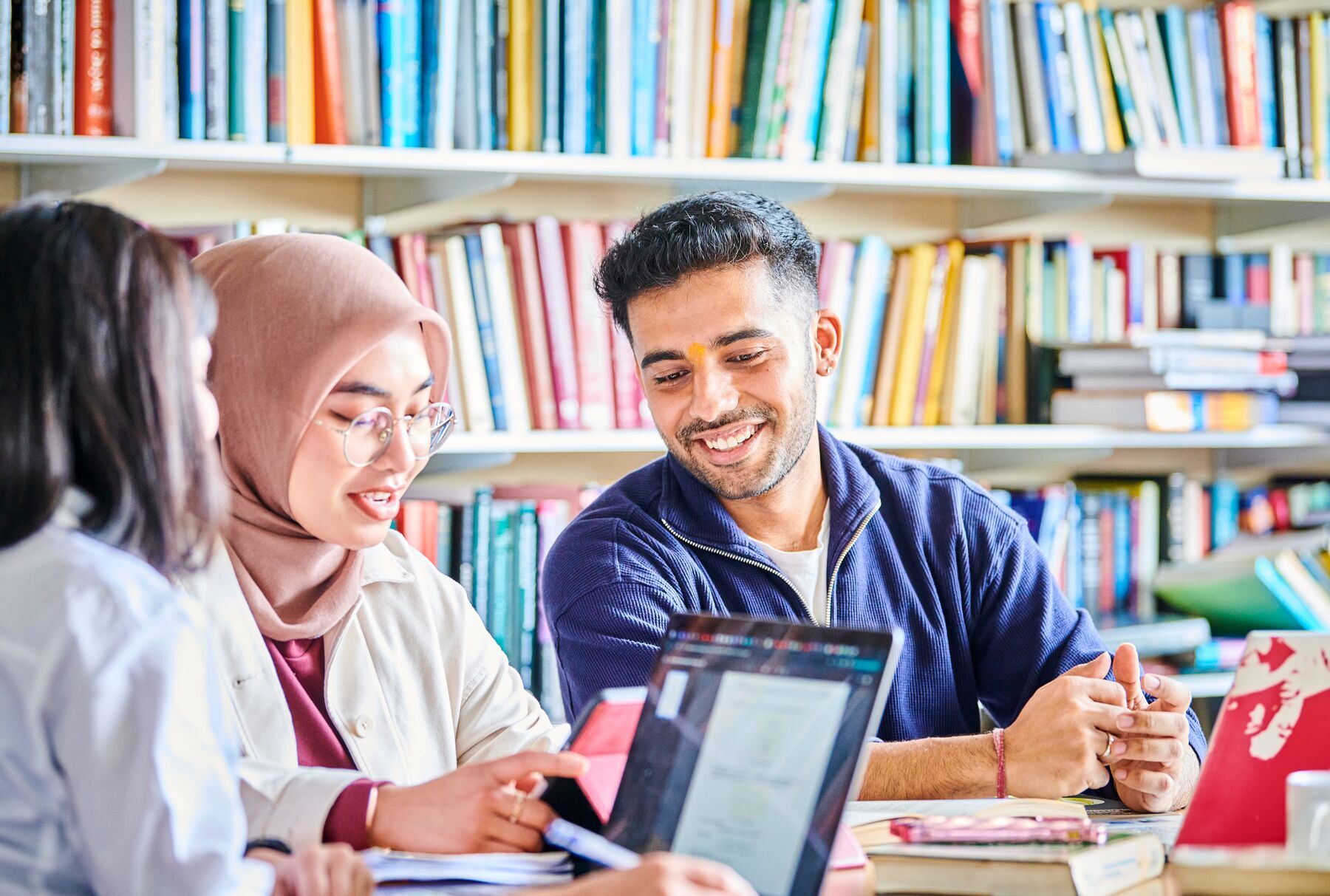Experiment takes flight with European Space Agency
13 February 2025 | By: Judith Charlton | 3 min read
Four Newcastle University PhD students represented the UK when they put their research to the test during a European Space Agency (ESA) programme.
Koren, Tom, Kitty and Alex of Team SUGAR – Saccharomyces cerevisiae Uptake of Glucose Applying Real-time imaging – were selected to take part in the 79th ESA Parabolic Flight Campaign which allows scientists to conduct experiments in zero gravity conditions. Here, the team reflect on their experience.
The start of the journey
The team’s journey started in 2021 with team leader Kitty developing the idea for the project based on her own research in the imaging of yeast cells. She drew the team together for an application to ESA education for the 2022 campaign and the idea came to life with the acceptance of our proposal.
The experiment involved using a fluorescent microscope to image the uptake of glucose by baker’s yeast cells; the glucose would be delivered to the cells using a syringe pump. We conducted it on a parabolic flight run by Novespace out of Bordeaux Airport, in France. These flights simulate microgravity in 22 second bursts using freefall by executing a parabola manoeuvre.
Building the experimental rig
To conduct the experiment we needed a rig that would house the syringe pump and the microscope.
The microscope was based on an open-source microscope from the Prakash lab at Stanford University. It was custom-made using parts from both ThorLabs and Heidstar and featured a brightfield tube to take black and white photos of the yeast cells. The scope also featured a fluorescent tube to take pictures of the fluorescent glucose only. Both images were combined to track the progress of the uptake of the glucose. The microscope was controlled with a laptop; imaging and stage control.
The syringe pump was designed to be both cost-effective and modular, so it would be suitable for multiple uses. The chassis for this was 3D-printed and used standard electrical components making it cheaper and easier to customise than off-the-shelf systems. It was controlled via an electrical control box with dosing, jogging and homing functions.
Both the microscope and syringe pump were placed inside a waterproof box, provided by the Zarges company. The controls and electronics were attached to a plate that would be placed next to the box during the flight.
Pre-flight preparations
Once the team and the experimental rig made it to France, the final touches were made to the system. The first week was full of the initial assembly, cable management and testing. Several problems also had to be fixed such as syringe pump connections, microscope camera connections, microscope Z-stage motor and connection, before the system was successfully loaded on to the plane.
The ‘devil’s breath’
The final week of the campaign was what we’d all been waiting for – the start of the microgravity flights.
Two team members were allowed on each of the three flights. We had to dress in bright blue jumpsuits and were injected with the drug scopolamine, or ‘devil’s breath’, which is used to prevent in-flight nausea – the side effects are a slight drunken feeling and a dry mouth.
The parabolic manoeuvres are performed over the ocean, so there was an anxious 20-minute wait after take-off until we were allowed to leave our seats and start preparing for the first parabola.
The first parabola was ‘free’ and not meant to be experimented in, this was so we could get a feeling for both hyper- and zero-gravity before starting the experiments.
Experiencing microgravity
Microgravity is unlike any other feeling you might have experienced before; you are effectively in free fall, but it doesn’t feel like that. There is no way to describe it; you are just floating, with nothing but the perspective of the plane to tell you which way is up or down.
If it wasn’t for the restraints, everyone in the cabin would have been flung about, everywhere. The plane featured a free-floating area where restraints were not required. This was a lot of fun to be in!
The science bit
Even though the experience of microgravity was amazing, there was still science to do. During the first flight, Alex and Tom had a problem with the syringe pump where all the pumps were stuck at the bottom during a homing sequence.
The next flight, Kitty and Alex had a problem with the Z-axis of the microscope, which controlled the focus. It became stuck which meant they had to manually focus the microscope by hand in limited time. This, unfortunately, did not yield useable results.
The last flight with Kitty and Koren saw the equipment work perfectly, but a lot of the cells didn’t stick down to the slides and were removed with the injection of the glucose.
An unforgettable experience
We were proud of the progress we made and, overall, the experience was a success. We left France with a bunch of data to crunch, notes to write up and memories of something that few people ever get to try.
The parabolic flight campaign gave us valuable experience working on a practical scientific project. We were able to apply skills previously developed with our own research and gain new skills which we wouldn’t have normally gained without working on this kind of project.
The experience will be a fine addition to our CVs and enable us to stand out in front of other candidates when we start our careers after we finish our PhDs.
The team would like to thank the ESA, Newcastle University and the UK Space Agency for their financial and practical contributions to the project.
Interested in finding out more? Check out the ESA education website for gravity-related projects or follow Team SUGAR’S progress on Instagram, LinkedIn or Facebook

Ranked among the UK’s Top 10 for Postgraduate opportunities and services by the WhatUni Student Choice Awards 2025 - trusted recognition from real students
